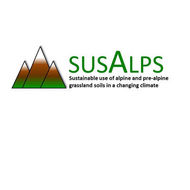A concept to optimize the accuracy of soil surface area and SOC stock quantification in mountainous landscapes (2019.0)
Prietzel J., Wiesmeier M.
Geoderma, 356 (), 113922
doi:10.1016/j.geoderma.2019.113922
Abstract
A correct quantification of soil surface and soil organic carbon (SOC) stocks is crucial for the evaluation of important soil functions, including atmospheric C sequestration. At present, soil science lacks (i) a clear definition of soil depth, (ii) consented procedures for soil sampling, as well as (iii) adequate awareness concerning pitfalls and caveats associated with quantification of soil surface area and large-scale SOC stocks in mountainous, complex landscapes. Traditional SOC stock quantification in these landscapes often did not adequately address site-specific geomorphological conditions and thus yielded incorrect results due to combination of incompatible methods for soil depth assessment, soil profile or core sampling, and soil surface area calculation. In our paper, we suggest unequivocal definitions of soil depth, horizon thickness, and SOC density, which can be applied for soils in sloping as well as flat terrain. Moreover, we quantify and discuss potential SOC (and other soil nutrient) stock assessment errors in mountainous regions, using the German Alps as case study. We present a protocol to ensure an unbiased quantification of soil surface area, as well as SOC or nutrient element stocks in mountainous landscapes. Taking into account the considerable area of sloping terrain on the global scale, and particularly in mountainous countries (e.g. Switzerland, Austria, Andes Countries, Nepal, Japan), our publication will contribute to a more accurate quantification of soil stocks of SOC and important nutrients as well as area-based C fluxes (e.g. CO2 sequestration or release) or other surface-related biogeochemical fluxes.
